The sad truth about orange juice
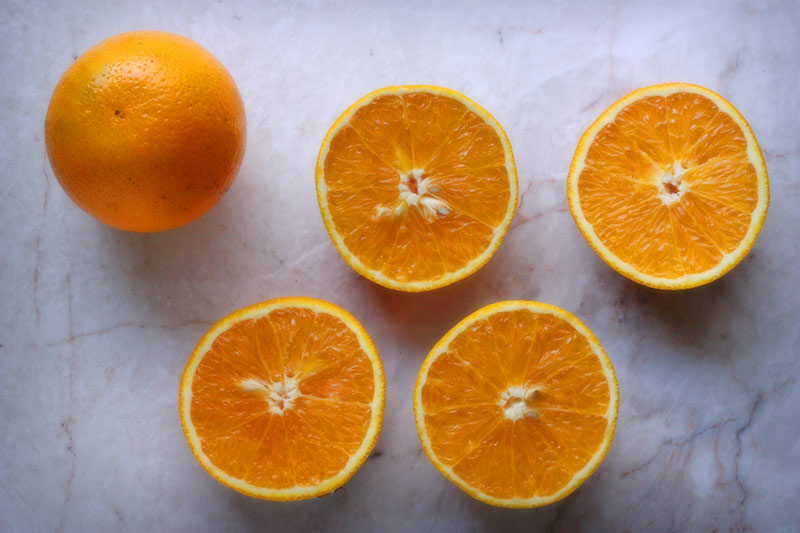
Being that now through May is Valencia orange season in Florida, and that these delicious globes of sunshine are stacked high in netted bags at the store — irresistible, ready for fresh squeezing — I wanted to share with you a bit of the underbelly of the juice industry, and how those ubiquitous cartons at the other end of the store get from grove to market. Forewarning: it isn’t pretty. And whenever I juice these oranges, filling my kitchen with bright aromas of citrus and summer, I despair a bit at how we arrived at this sorry state.
Commercial orange juice production has a long, checkered history. I haven’t consumed it since the 1990′s. I’d like to say I already had the spark of food activism back then, but the truth was, I just didn’t like it. The texture was never right — either too thin or too syrupy — and it usually served only to make me more thirsty.
Back then, I had a job in the IT department of a large law firm that was defending consumer goods giant, Procter & Gamble (whose headquarters is in my hometown, Cincinnati), against a lawsuit claiming fraud and deception with regard to their orange juice brand, Citrus Hill.
The core of the suit revolved around P&G’s use of the term “fresh” to market and label its Citrus Hill juice, while the juice was actually (and admittedly) reconstituted from frozen concentrate. At the time, we consumers were shocked. Not just at P&G, but at the entire industry, since all companies used concentrate for their juices, but didn’t label it as such.
Shocked, because frozen concentrate just sounded so … icky.
It pales, of course, to what we now know is in our food, but at that more innocent time, frozen concentrate seemed a blasphemy and a betrayal to the consumer. It suddenly made perfect sense to me why commercial juice tasted nothing like freshly squeezed: it wasn’t freshly squeezed, not even close.
Simultaneous to this court action — and more significantly so — the FDA was trouncing all over P&G for this very issue, “fresh” vs. “concentrate,” even going so far at one point as to raid a Minneapolis warehouse and seize crates of juice.
The “100% orange juice” industry was (and is) fiercely competitive with the big guns, Minute Maid and Tropicana, using every weapon at their disposal … especially words and phrases. P&G’s third-place Citrus Hill was arguably just trying to gain a foothold in the battle by incorporating “fresh” into its brand — a strategy, P&G contended, that was used by their competitors, up and down the ladder. The FDA agreed, but claimed it was too busy to proactively police the entire industry for misuse of the word “fresh,” whereas it already had P&G in its sights.
Eventually, these various external forces led P&G to discontinue its Citrus Hill brand, and all matters were closed.
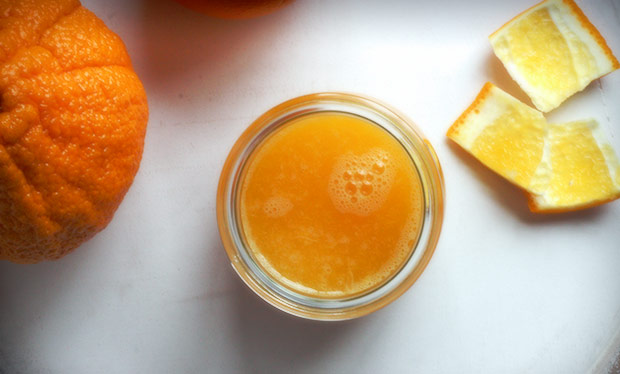
But even now, in 2013, the orange juice story is not over. Far from it, in fact. I say this because many of us scrutinize what we buy at the grocery store for artificial and suspect ingredients and are relieved to see the words “not from concentrate” on the orange juice container.
Not-from-concentrate sounds much, much better, right? Fresher, more natural?
Unfortunately, it isn’t.
Even though P&G took the brunt of the fresh vs. concentrate scandal, the issue was not soon forgotten. With their masks stripped off, juice manufacturers began developing other methods for producing orange juice in the not-from-concentrate form we are now used to.
In 2010, Alissa Hamilton’s book, Squeezed, documented the bizarre history of commercial orange juice, including its disturbing current incarnation.
Frozen concentrated orange juice is out; pasteurized, deaerated, stored-long-term, re-flavored, not-from-concentrate orange juice is in.
Wait, what the what? “Deaerated?”
The first time I saw the term, I had to look it up: A process that removes oxidizing air from the juice so it can be safely stored for a very long time — up to a year — in huge, aseptic tanks.
Fact: the orange juice you buy today was likely squeezed last summer.
But deaeration removes something else as well: the orange flavor. Before packaging, manufacturers have to mechanically add the orange flavor back in to the juice.
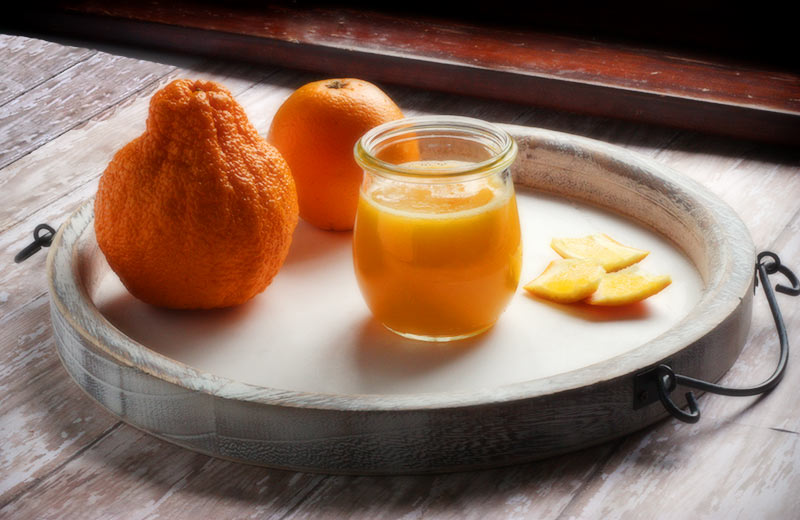
Here’s the summarized view of the process:
Juice oranges are shipped in from wherever oranges are in season (most often Brazil, which is the world’s largest producer of oranges for our juice — not Florida). The type of orange is inconsequential. We, the naive, trusting public would like to believe it’s always the Valencia orange, the best and most flavorful of the juicers, and always from our very own Sunshine state, Florida. But not always. Not even usually.
The oranges are squeezed and their juices go through pulp reduction, deaeration and pasteurization processes that prepares them for storage in aseptic bulk tanks.
Now, with the deaeration process having removed most of the “orange” flavor from the juice, manufacturers have to get that flavoring back in there; otherwise, the juice would be intolerable.
And so, they turned to the fragrance industry. The folks whose noses produced your favorite high-end perfume are the very ones who create orange juice flavors.
Meet the flavor pack: a laboratory-produced concoction of carefully blended chemicals that taste and smell like fresh orange juice. (Excerpt from Hamilton’s book on deaeration and an interview.)
Manufacturers go to considerable lengths to perfect the essence of the orange in chemical form* and protect their unique signatures. (Small brands looking to break into the industry often hire fragrance houses with the instruction to mimic Minute Maid’s or Tropicana’s flavor packs.)
(* Orange juice does not get dinged by the FDA for artificial flavors because fragrance houses begin with natural orange essences and break them down into their constituent chemicals. From there, those chemicals are reformulated into flavor packs, which are then added back to the juice to restore flavor and aroma.)
And this is why I still don’t buy packaged orange juice: “natural” or not, it still doesn’t taste anything like freshly squeezed at home.
(And, as I mentioned, most juice oranges come from Brazil, where federal standards for safety concerning pesticides and other handling practices are much lower than ours. So, if you’re consoling yourself that at least your orange juice is safe, we can’t be certain that is the case.)
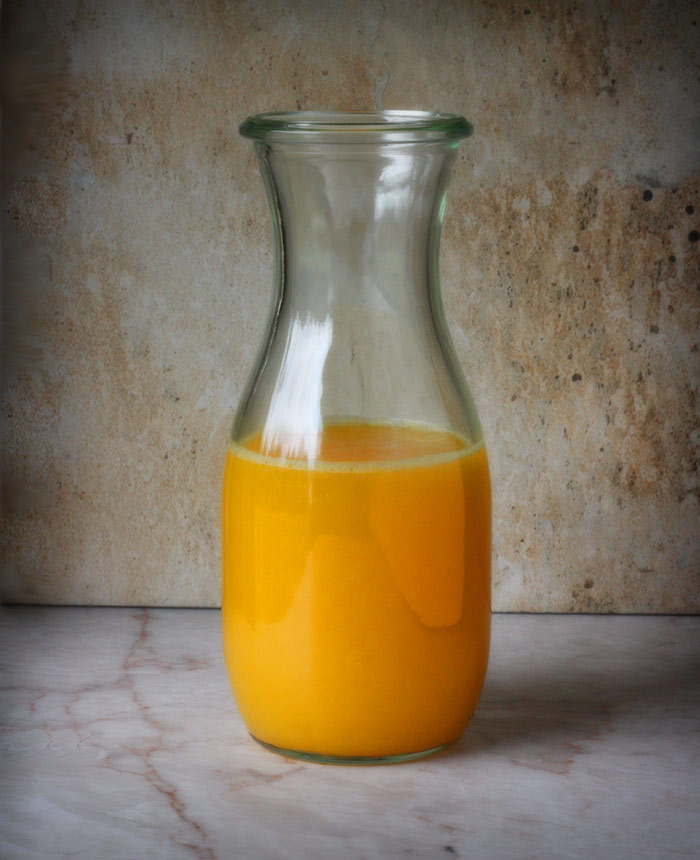
This, above, is a pitcher of freshly-squeezed Florida Valencia orange juice. Light, softly sweet, and thirst-quenching, it positively shames the thick, almost gritty, commercial juice. (The first photo at the top shows the oranges this juice came from.)
Valencia oranges are in season for the next month or so — seek them out, squeeze some fresh, and test the difference yourself.
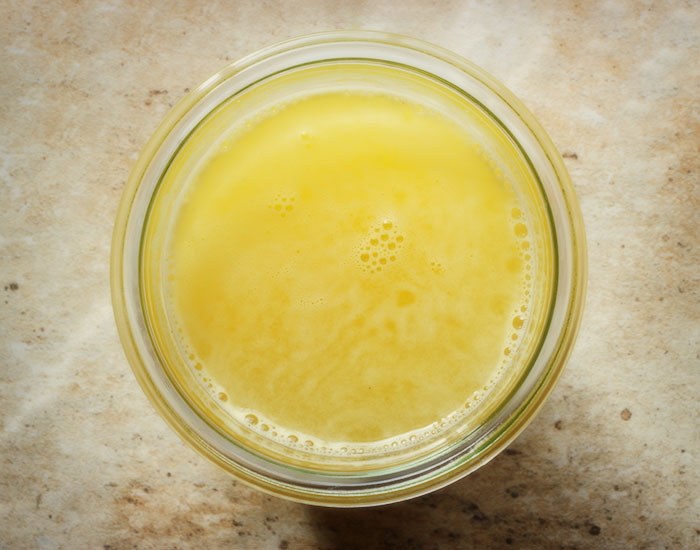
And while we’re talking about juices … in a similar vein, I’ve never liked apple juice. Dark amber and curiously syrupy, bottled apple juice was over-the-top gross. I couldn’t stand it, and still can’t.
Then I bought my juicer and tried freshly pressed juice from Honeycrisp apples (photo above) for the first time. Just look at that juice! Pure golden apple essence. And the taste … apple perfection.
I find it completely confounding that the juice industry has taken nature’s most gloriously flavored fruits and reduced them to a hot mess of weird and processed liquids. I understand the trials of mass production, product safety, and supply chain distribution, but, in my opinion, they should not be allowed to call it juice.

Comments:
Comments are closed.








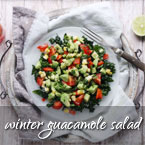
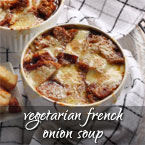


great write up karen. i did not know the ‘facts’ but have always, and i mean always, trusted my taste buds. the fact that i lived in florida for 10 years, we squeezed our own from our own trees, and when those were gone, we went to the orange groves nearby and squeezed those. how anyone could remotely compare store bought with fresh squeezed and not taste the obvious difference? beyond me. and, yes, that goes for any other fruit store bottled ‘juice’ too. btw…lovely imagery;)
I remember when my husband told me about this last year after reading an article online. I was horrified. I mean, I always knew that the taste between fresh and store-bought was hugely different, but I never thought much about it and just assumed I wasn’t using the “best” oranges. It’s really sad to think about how much processing and additives go into food that should otherwise be so simple. Thanks for this article though…one more reminder to use whole foods whenever possible.
It’s so shocking because the processes aren’t anywhere close to being normal or sensible: if you had a thousand guesses, you would never come with up “perfumists” as the source of orange juice flavor. It’s not even clever invention – it’s a twisting of nature.
WOAH! This is craziness. I had no idea… sharing stat. Whole, local foods are always the way to go. I should’ve known better that that the consistent flavor was manufactured. Seriously, mind blown.
Sing it, sister. People need to know and you’ve explained clearly and concisely what’s wrong with most juice, orange, apple and probably otherwise.
I wonder if the large Cincinnati firm I did software development for is the same as yours? Possibly a very small world.
I wouldn’t be a bit surprised – I seem to have small world moments every time I turn around.
I just had this convo with my husband last weekend. We went to the farmers market and there is a guy who sells freshly squeeze OJ. And it’s like magic in your mouth. Nothing like the carton stuff! We’ve officially started squeezing our own. A little extra work but totally worth the effort. Really!
THANK YOU for this! I have always known there was something terribly wrong with most store-bought juices, and have always avoided them (simply because I didn’t like them). As a kid my family used to take trips to Florida, and we would always come home with a trunk full of citrus to juice. There are also some places like Whole Foods that sell OJ that’s been fresh-squeeze in store from their oranges, and that stuff is probably the closest equivalent for someone not in the sunshine state. There is nothing, and I mean nothing like fresh squeezed juice – apple, orange, whatever – and it is so easy to make at home.
Excellent article!! I too have stopped buying bottled juice of any kind. I invested in a good juicer and now make my own juice…….the difference is like night and day!! Thanks for posting sharing this info with us!!
I agree completely – I had no idea what a difference a juicer was going to make in my life when I bought it. I never would’ve discovered fresh apple juice without it.
I’ve always loved freshly squeezed orange juice and wondered why I couldn’t stand the taste of the store-bought kind. And I also wondered how, if the store-bought kind was natural, it tasted so different from the fresh kind. I never thought about it enough to do actual research on it though, so reading this post was really fascinating. Your homemade juice looks like perfection to me!
Great post! Thank you for making all of this much clearer. I used to work for a produce company, and could buy 50# boxes of juice oranges (the bruised, sad and unwanted ones) for around $10 a box. A small inexpensive juicer made it so easy to make fresh juice each morning, and we loved the taste. My mouth would often get irritated if I drank too much orange juice, but that never happened with fresh squeezed. Hmmmm.
I miss those boxes,
By the time juice oranges get up here, they’re mostly sad looking. I love that about them. Scarred and unevenly orange on the outside; bright, perfect and juicyjuicyjuicy on the inside.
Great article! So well written, and beautiful photos. I’m horrified to know how orange juice is made – that process makes concentrate seem positively virtuous! We only drink the hand-juiced stuff around here. Your words on apple juice are inspiring me to get a juicer. Thanks! Looking forward to perusing your site some more – great design.
That’s exactly what I thought – the concentrate might have been frozen, and have a weird texture upon reconstitution, but at least the flavors weren’t monkeyed with by perfumists.
I’m curious now. If I buy oj, I always buy the “100% juice” containers. Do you know if even those have been through this process you describe?
It depends on the brand, but the major conventional brands, like Minute Maid, Tropicana, and their direct competitors, all use this process. Unfortunately, it’s impossible to know just from the container how it’s produced. The juices are — as far as we know (I always feel the need to qualify anything concerning industrial food) — 100% orange juice. It’s just that the flavor components have taken apart in the laboratory and put back together again.
thanks!
Great post. And oh lordy I could tell you similar nonsense about my years working on the Ocean Spray account. Blah. Drink water.
Wow I had no idea about all of this. Thank you for sharing! The fact that orange juice could be a year old before it hits shelves it shockingly scary. Good thing my wife got a juicer this year for Christmas. Looks like we’ll be juicing our own orange juice in the future!
We lived in Spain for 3 years and enjoyed fresh squeezed juice from “Zumos” – oranges that were sold cheaply in the farmer’s market as juice oranges. Frankly, unlike Florida “Valencia” oranges, these oranges were completely non-fibrous and delicious to eat as well as being cheaper than “naranjas” – regular eating oranges. I suspect they came from Valencia, but I saw more labeling for traditional Valencia Paella than oranges. We only had a cheap, small juicer, as we had a whole houseful of 230 volt appliances to buy, but it was easy to make OJ glass by glass. What a treat! Who would ever buy orange juice again?
Excellent post Karen. Growing up in the Midwest, late 50′s and 60′s, my mom shopped at Kohl’s which back then was a grocery, not what it morphed into today. She bought fresh oj all the time. They had a machine loaded with Valencias that was set to squeeze, de-seed and leave the pulp in. It sold in glass qt. jars. It was “common place”. From that time I’ve never been able to tolerate “manufactured” oj. The closest I can get today is Trader Joe’s which has an un-pasturized, full pulp version that tastes like the real thing. Glad you published this post because I know so many people (in CA even!) that buy the cheap processed stuff and I just cringe.
P.S. One more thing, I read that if you juice a Navel and don’t consume the juice within hours, a lot of the sweetness is lost.
This is why I prefer to buy organic orange juice – the ones I buy are freshly squeezed and acknowledge that colours and flavours may differ from batch to batch. It tastes amazing too.
jamba squeezes it right in front of you .. that’s why I like them
great article
I will show my friends and relatives
who the heck would know pure 100% is nothing like that…
some producers do however put “freshly squeezed” on the packaging… perhaps this is not stored so might be better!
I found this because I just started surfing the web on the whole issue of orange juice which is on my “to do” write about list. I spoke with the President of Natalie’s OJ(who Trader Joe’s private labels) at the Chicago Restaurant Show and he had horror stories about what places like Tropicana consider fresh. Natalies it sounds really does try to do the right thing in terms of oranges but I have not researched it enough to see if what they are saying is true. But the pictures of a Tropicana plant in Florida look like an oil refinery it is really repulsive and so far removed from at least my perception of orange juice. Besides squeezing your own, have you looked into Natalies’s or any other brand that actually is close (no company is perfect) to good juice?
I’m certain that there are plenty of small companies out there who are trying to do things right (or at least, much better). I salute them. But, access to such brands requires a lengthy-ish trip to Whole Foods (or a much longer drive to Trader Joe’s). I’m actually more partial to tea as a drink, so I’m content to wait for the proper U.S. orange season and squeeze it fresh. It’s a seasonal treat for me, like summer tomatoes.
Thanks for writing this informative and truthful piece. This is exactly why i do not like OJ. I never been a fan of the taste and somtimes to acidic flavor. I did see a few years ago on a documentary I presume of how OJ was made and just as you stated i was like Whattttttt they have to add flavor back because they want to have OJ sitting in a tank forever….sad I do however enjoy apple juice however have tried fresh and was like this is what i really been missing. I drink from the Simply brand usually (there apple juice and limeade) I wonder what are there practices for OJ the same as everyone else’s…perhaps